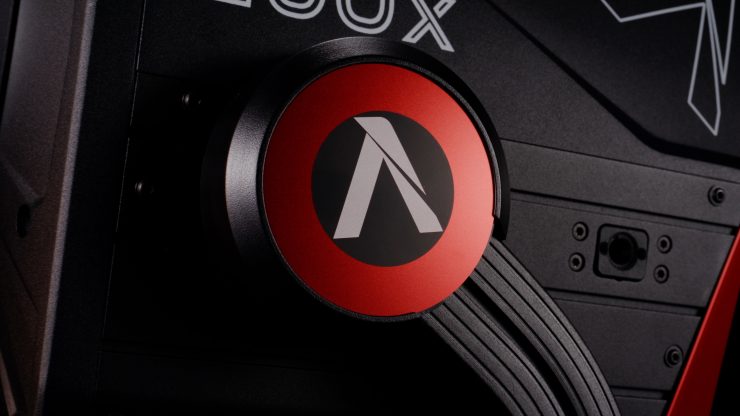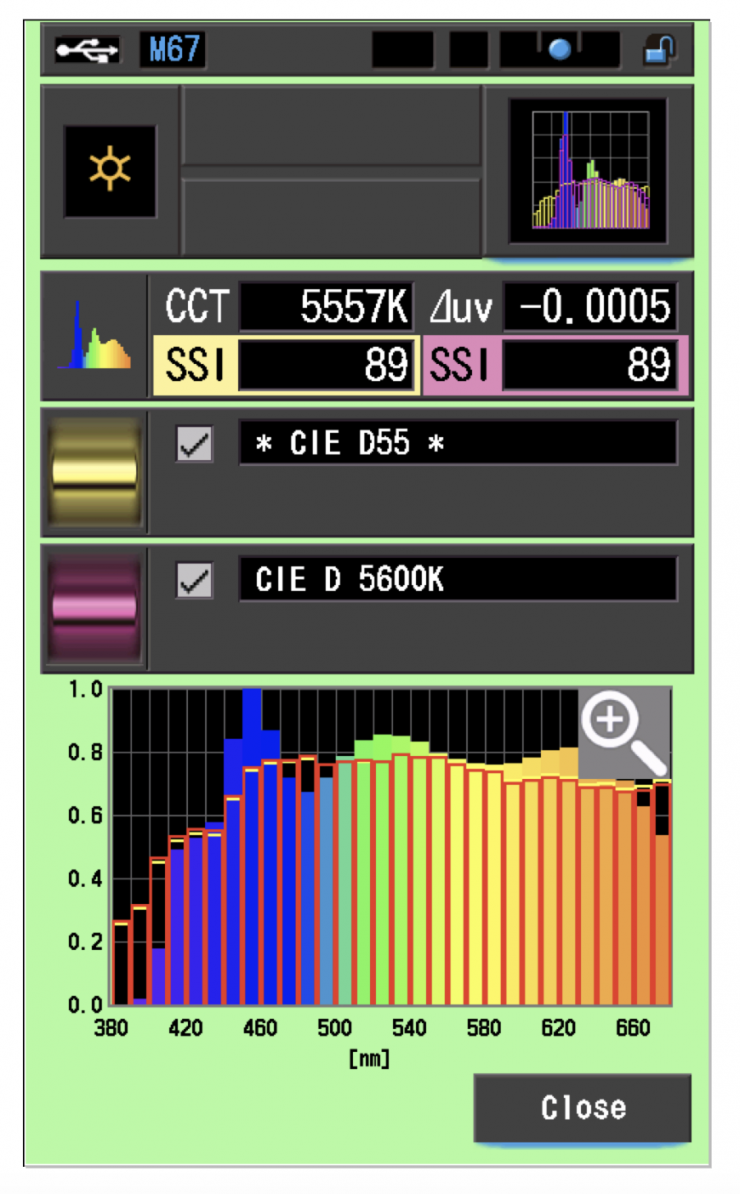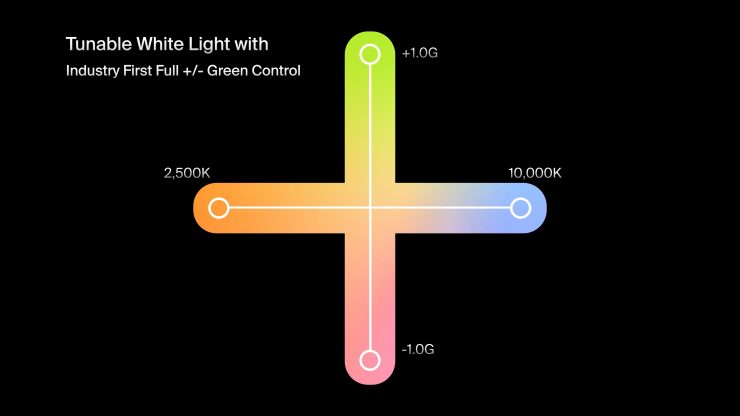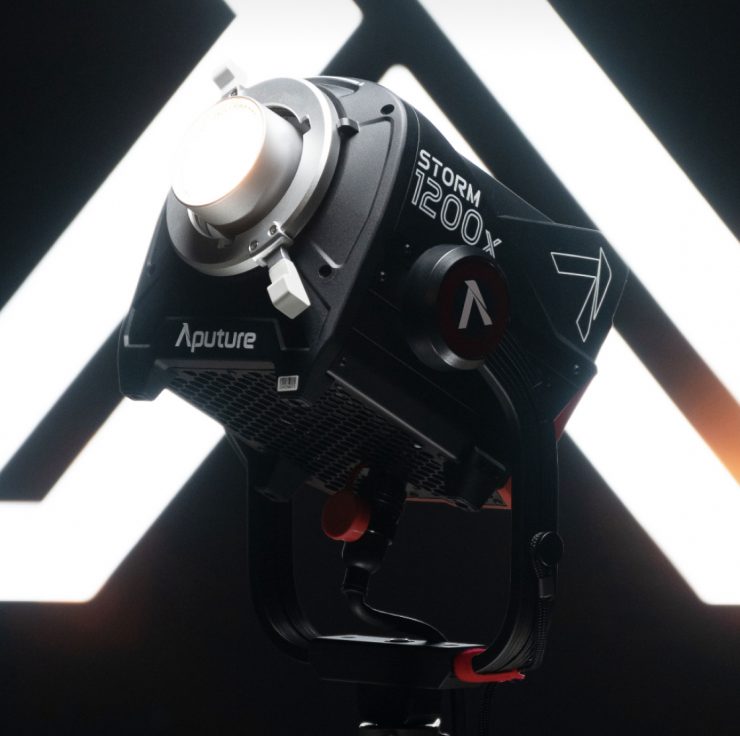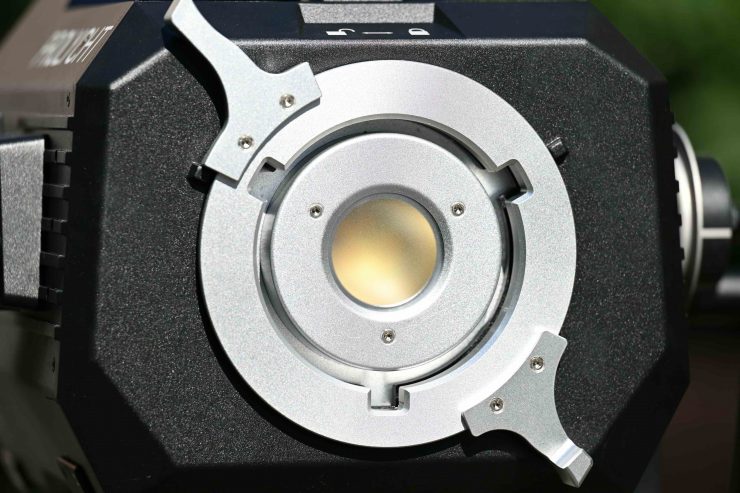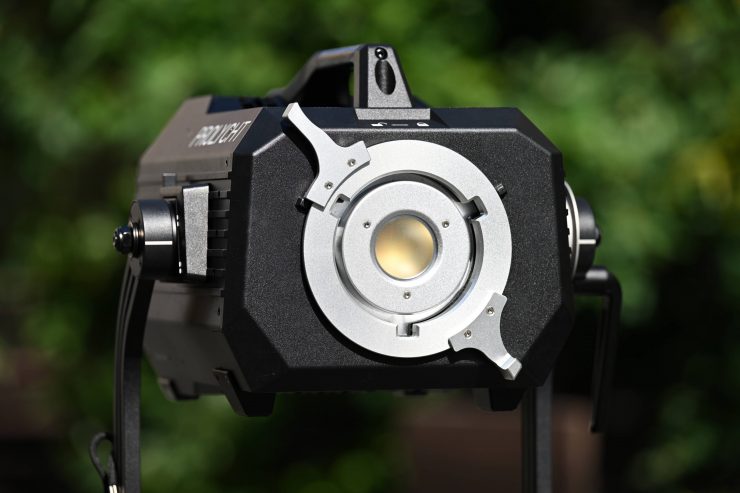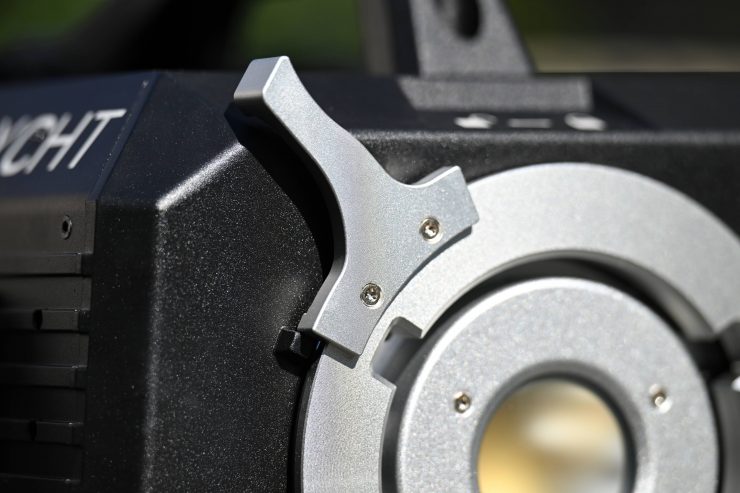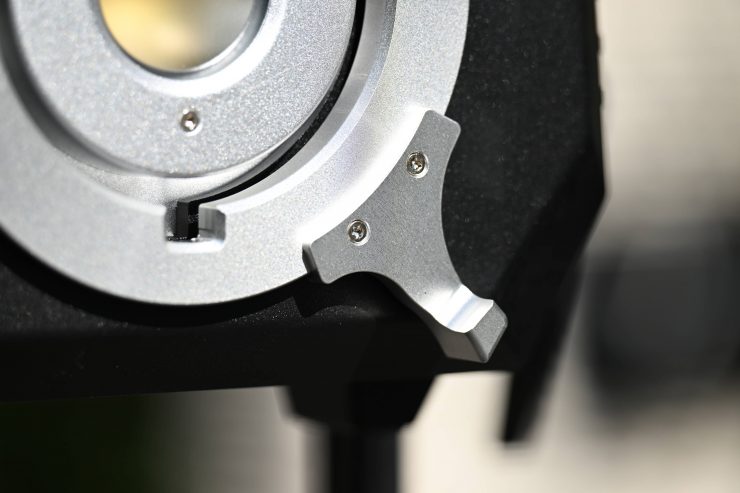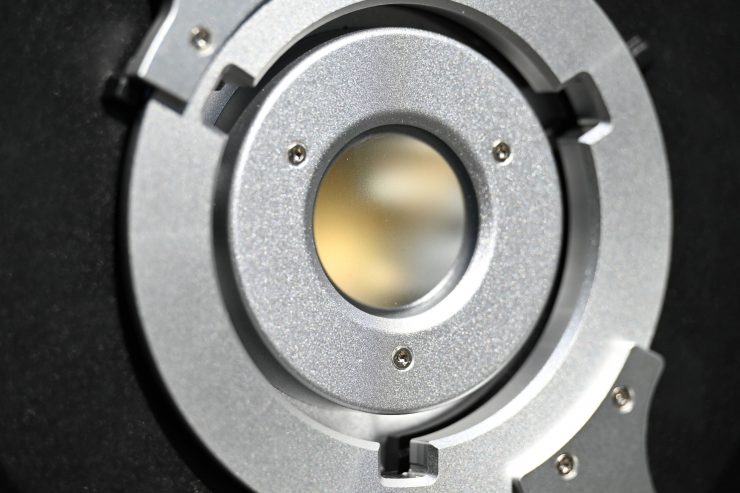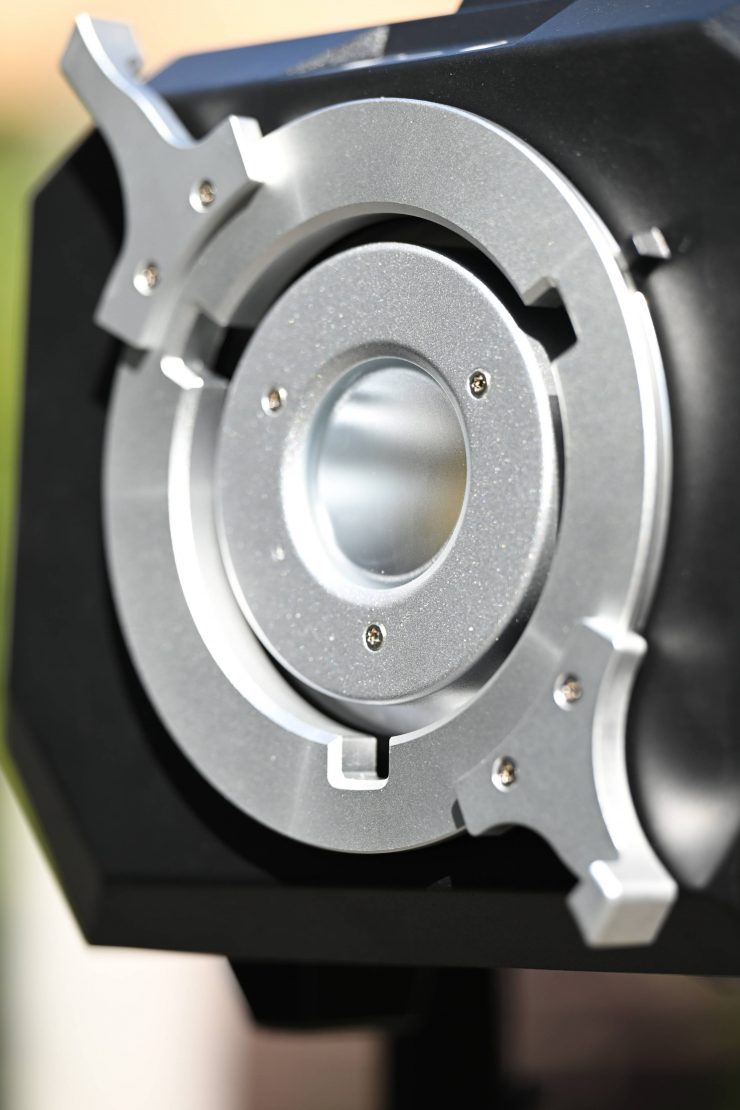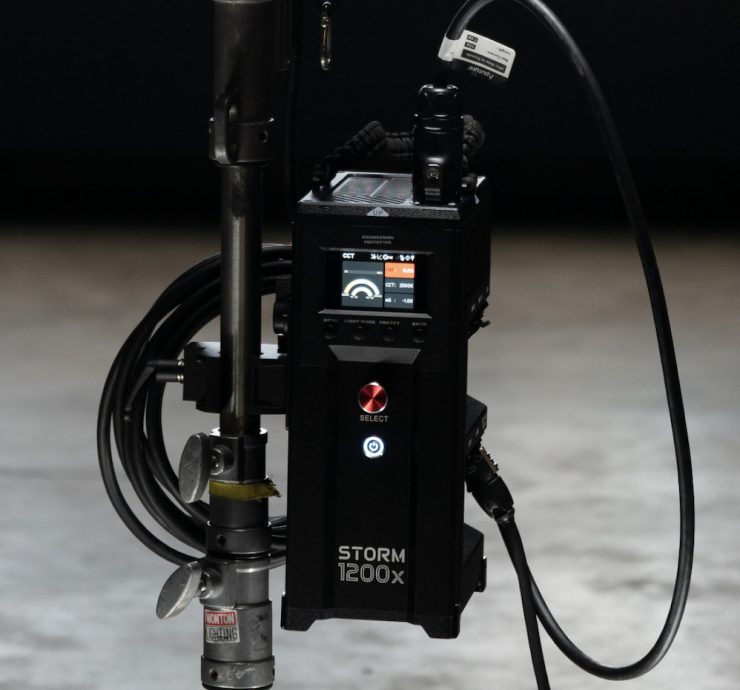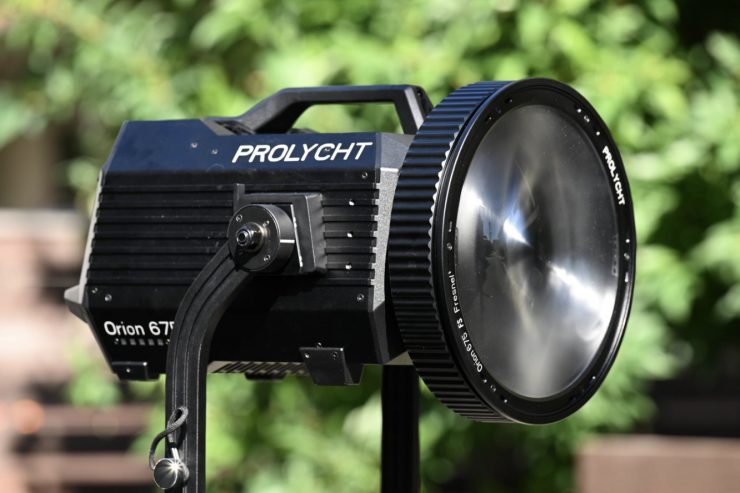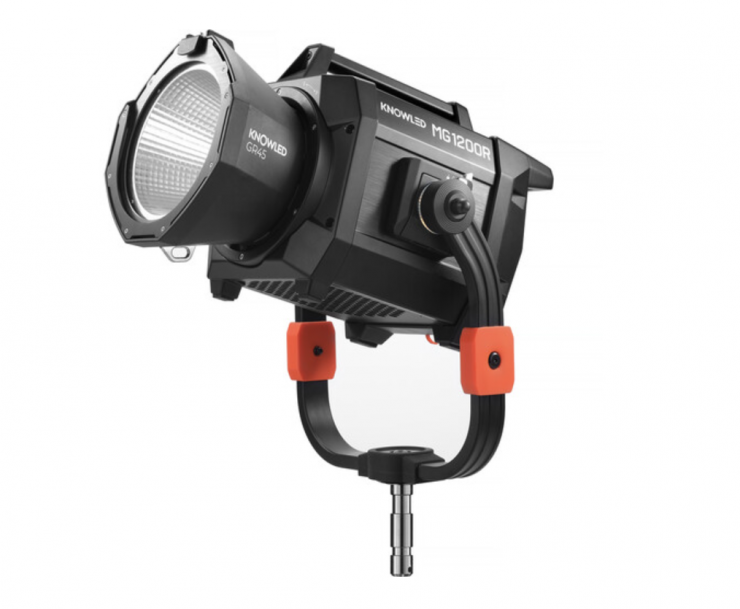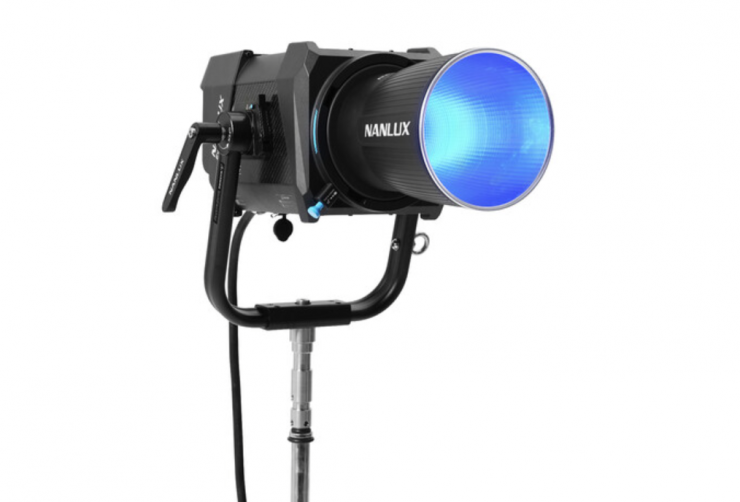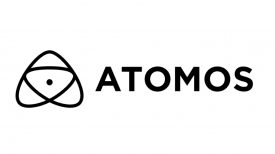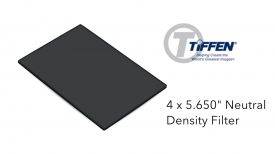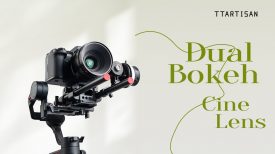Aputure has announced its new STORM 1200x. It is being billed as a workhorse light for any production. What is interesting is that the STORM 1200x utilizes a brand new light engine which Aputure is calling BLAIR. BLAIR stands for Blue/Lime/Amber/Indigo/Red.

Now, while this is technically a full-color fixture, Aputure told me that they view the STORM 1200x as more of an advanced Bi-color fixture, hence the x in the name. This is the first light in the new x series and there will be quite a few more fixtures coming in the future.
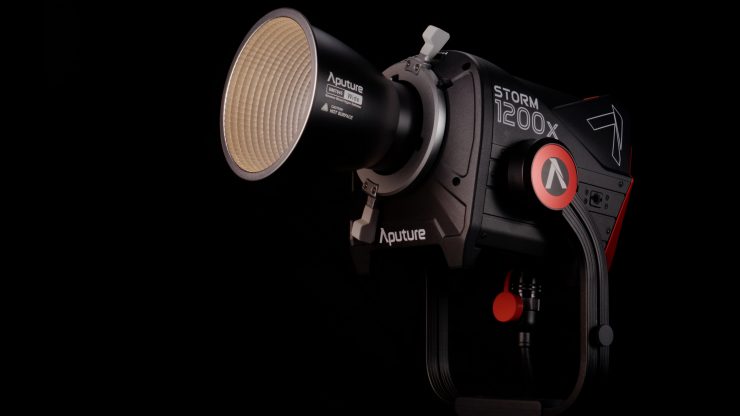
The whole concept behind the new technology in the STORM 1200x was to create highly tunable white light with the best quality and highest output.
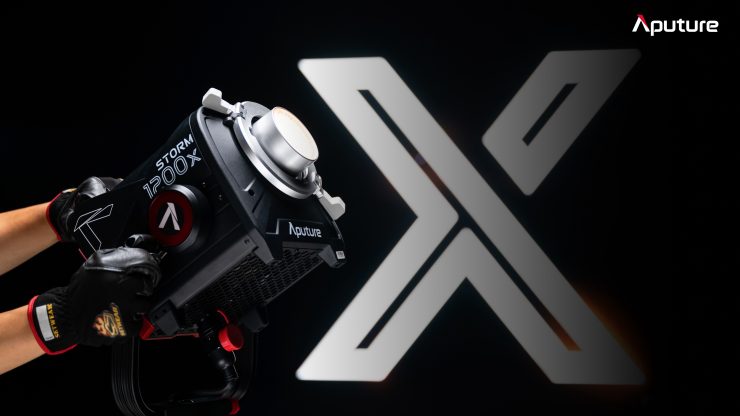
The light draws 1440W, which is the same as the LS 1200d Pro, but Aputure told me that it is significantly brighter. Aputure also told me that the light will have a very similar output across its CCT range.
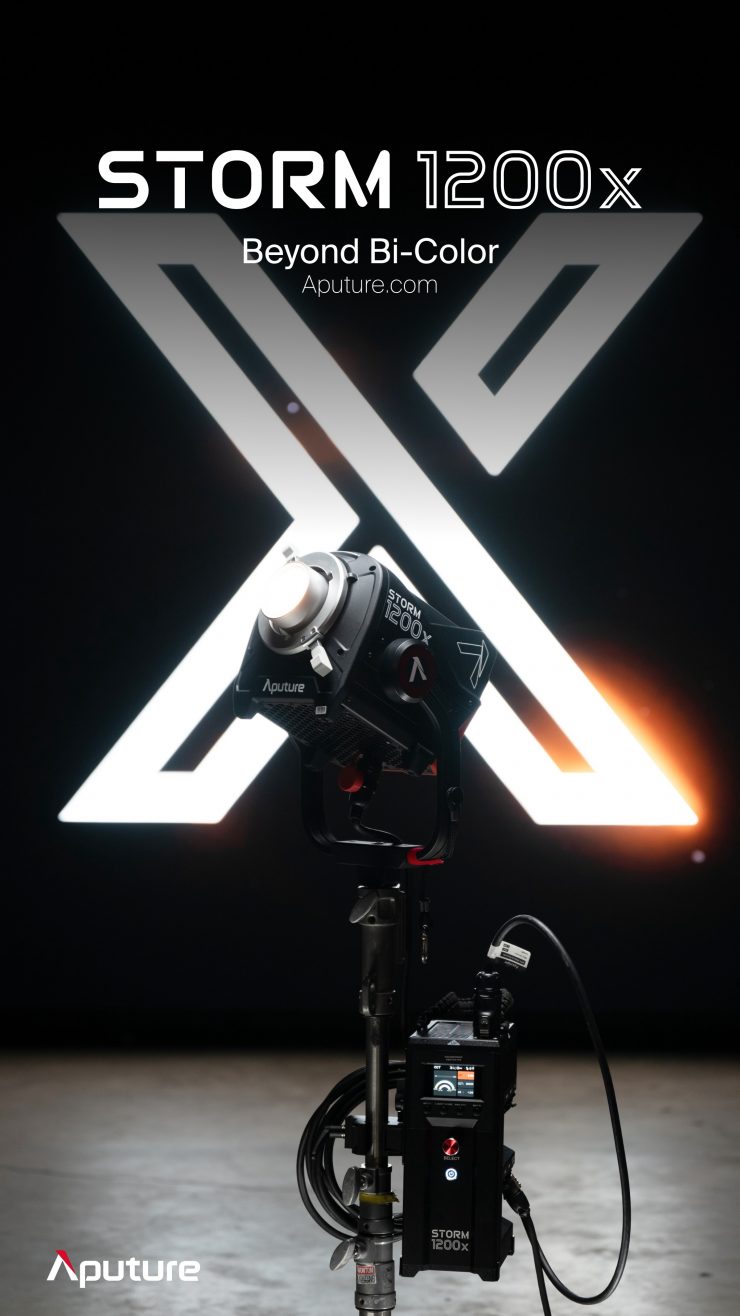
Key features
- CCT Range from 2500-10,000K
- Extended Range +/- Green Control
- ProLock Locking Bowens Mount
- Extreme Color-Accurate Dimming
- IP65 Weather Protection
- CRMX, DMX, and Bluetooth Connectivity
- 360-Degree Tilt: The extended size of the STORM 1200x yoke allows the light to fully rotate 360 degrees. This allows the lamp to be quickly pointed straight up, a task that requires competing products to re-patch cables to achieve.
BLAIR Light Engine
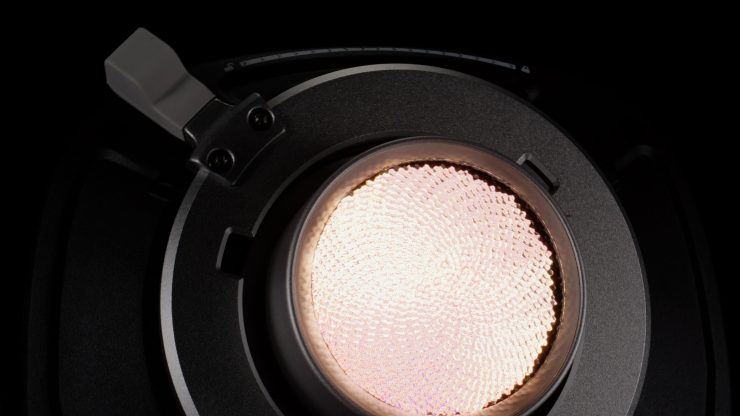
The BLAIR Light Engine is undoubtedly a direct result of Aputure acquiring Prolycht last year. With both Aputure and Prolycht engineers now working together for the same company they have been able to come up with something that is quite unique. Aputure claims that the new light engine is capable of producing the highest quality white light, an ultra-wide CCT range, full +/- Green control, and extreme color-accurate dimming.
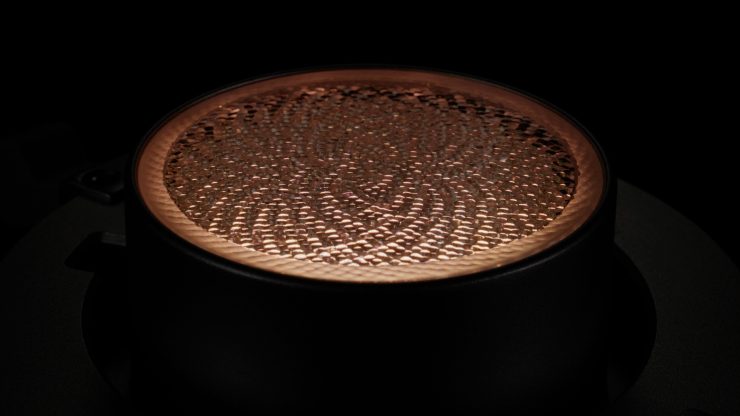
The BLAIR Light Engine utilizes blue, lime, amber, indigo, and red, LED emitters. This is quite different from RGBWW or RGBACL. Lights that utilize RGBACL don’t use any white LEDs, instead, they mix all of those different color LEDs to produce white light, and that’s essentially what BLAIR is doing too. Instead of having a green emitter, they are utilizing indigo.
Aputure decided to call it BLAIR because they wanted to avoid the alphabet soup confusion of other RGB variants. Regardless of whether you like the name or not, it is easier to remember.
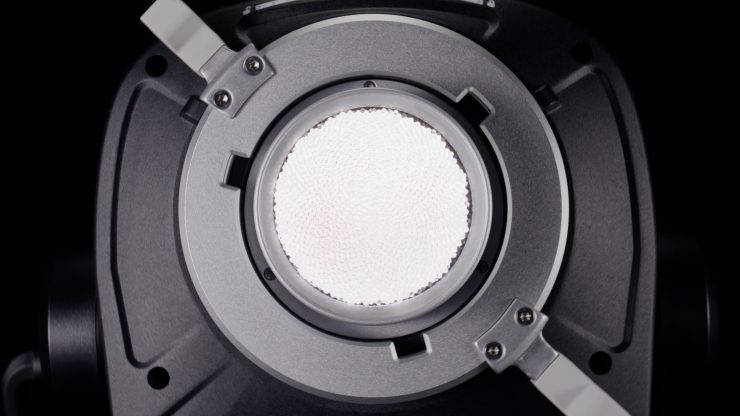
Aputure states that the 1200x is a full spectrum white light with excellent CRI and SSI. It is claimed to deliver a better quality white light to fill out the color spectrum while offering greater adjustability. The calibrated Indigo is said to enhance fluorescing materials, resulting in a higher quality white light that better matches natural daylight and black body sources such as tungsten quartz.
Adding Indigo is very interesting because the light it emits is right at the edge of our visible spectrum and that is why engineers probably haven’t thought about doing it before, that was until now. But, why Indigo? Well, not all objects or surfaces reflect light, some of them absorb it. What Aputure engineers found is that by adding an Indigo emitter certain materials and objects retained their natural brightness and color. In practice, this does actually make quite a noticeable difference. In some of the examples I have seen, you can certainly see the benefits of it. The benefits will be more noticeable when using the light at daylight CCT setting as opposed to tungsten.
The light is claimed to have the following photometric scores:
- CRI≥95
- TLCI≥95
- CQS [CIE D5600]≥96
- SSI [P3200]: 87
- SSI [CIE D5600] 87
- TM-30 Rf (average) 95
- TM-30 Rg (average) 100
Hive Lighting has been using 7 LED-chip blending. Instead of the traditional 3 colors, Hive uses red, amber, lime, cyan, green, blue, and sapphire. Companies like ARRI and Kelvin are using RGBACL, while a lot of other lighting companies are using RGBW and RGBWW.
The advantage RGBACL has over RGBWW and RGBCW is that it is capable of giving you a larger CCT range and it can produce more saturated colors with more output. RGBWW lights tend to struggle to create saturated colors like yellow and they don’t always have as much output when generating saturated colors. They can also have a large drop-off in output at different CCT settings.
There is a lot of debate and argument over what is better. Certain companies will tell you that RGBACL is better, while others will tell you that RGBWW is better. I don’t have any horses in this race, so I am not influenced by what lighting companies say. It will be interesting to see just how well the BLAIR Light Engine performs in the real world.
Aputure does have another version of BLAIR called BLAIR CG that will be coming to a new series of STORM C fixtures. Along with the blue, lime, amber, indigo, and red emitters, it also has additional cyan and green emitters.
Those will be specifically designed for creating high-quality tunable color as opposed to just tunable white. The STORM C series will be capable of providing a vast range of colors with full saturation.
How did they arrive at BLAIR?
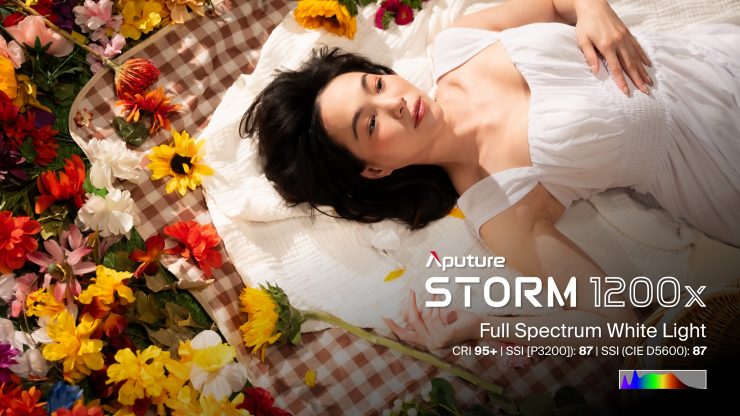
Instead of just making incremental improvements, Aputure got to the point where they asked themselves what are we trying to do, and what are the problems we are trying to solve. They wanted to come up with a better mouse trap and not just build another existing one. This led them to look at different ways of coming up with an alternative solution to what was already available. Aputure received a lot of feedback from Art Directors, make-up artists, etc. that things just never seemed to look quite right when trying to replicate daylight sources. With LED lights, replicating tungsten has always been a lot easier than replicating daylight. A lot of LED lights when used at daylight CCT settings never quite look right. The color of skin tones, fabrics, etc. can look slightly off. This led Aputure to re-look at the spectrum to see what was missing.
What Aputure found is that there was a discord between measuring colors with a meter and seeing what actually happened when it came to light being reflected and absorbed by colors. Certain surfaces reflect light, and others absorb it, and then there is another group that reflects back light that is different from what is hitting it. This can lead to differences in color and brightness. This discovery led to what Aputure believes was the key ingredient that was missing in the color engine, Indigo.
Probably the best way to describe it is that if you were to shine an incandescent UV light at an object, you can see how bright that reflected light is compared to the light being emitted from the source.
If an LED light doesn’t have a certain frequency that is contained in UV light it won’t look the same. This is why so many LED lights struggle to replicate daylight sources because up to now, those frequencies weren’t being generated by the light engine. Why engineers didn’t see this in the past, is because they believed that these frequencies weren’t visible to the human eye, but what they were overlooking was that the reflected light from these frequencies was visible.
Now, some other companies have been using an extra blue emitter in their light engines to help replicate better daylight sources, and while that may sound similar to what Aputure is doing, it isn’t exactly the same. However, I would argue that what Maxima has done with Maxima 6 GaN is very similar, even if it is using a different technology.
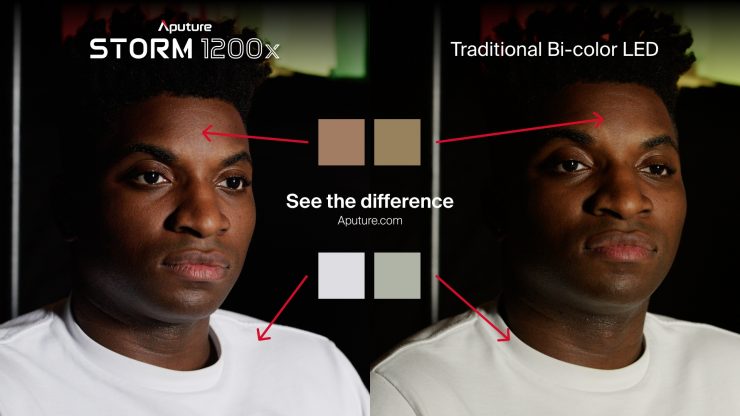
The above image from Aputure compares their light to a traditional Bi-color fixture.
While this does show a good real-world illustration of what the new BLAIR Light Engine does, I would have liked to have seen it compared to a light like the Maxima 6 GaN or ZOLAR Vega 30C which use similar technology to see what the differences were.
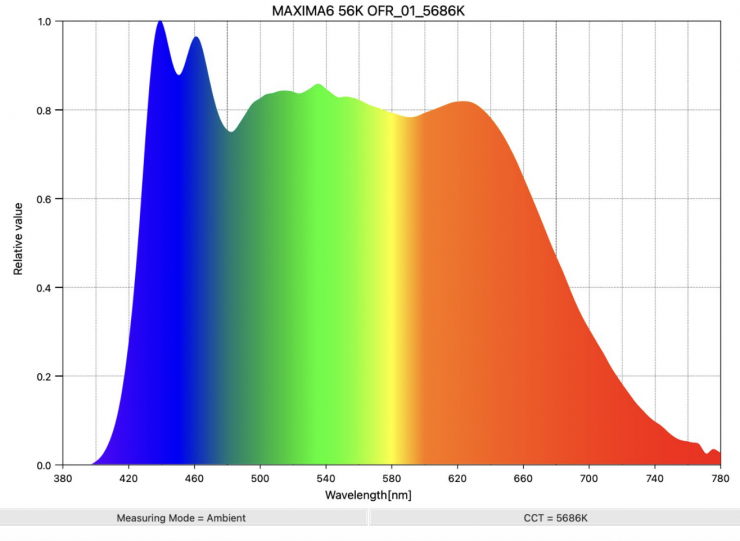

Maxima 6 GaN 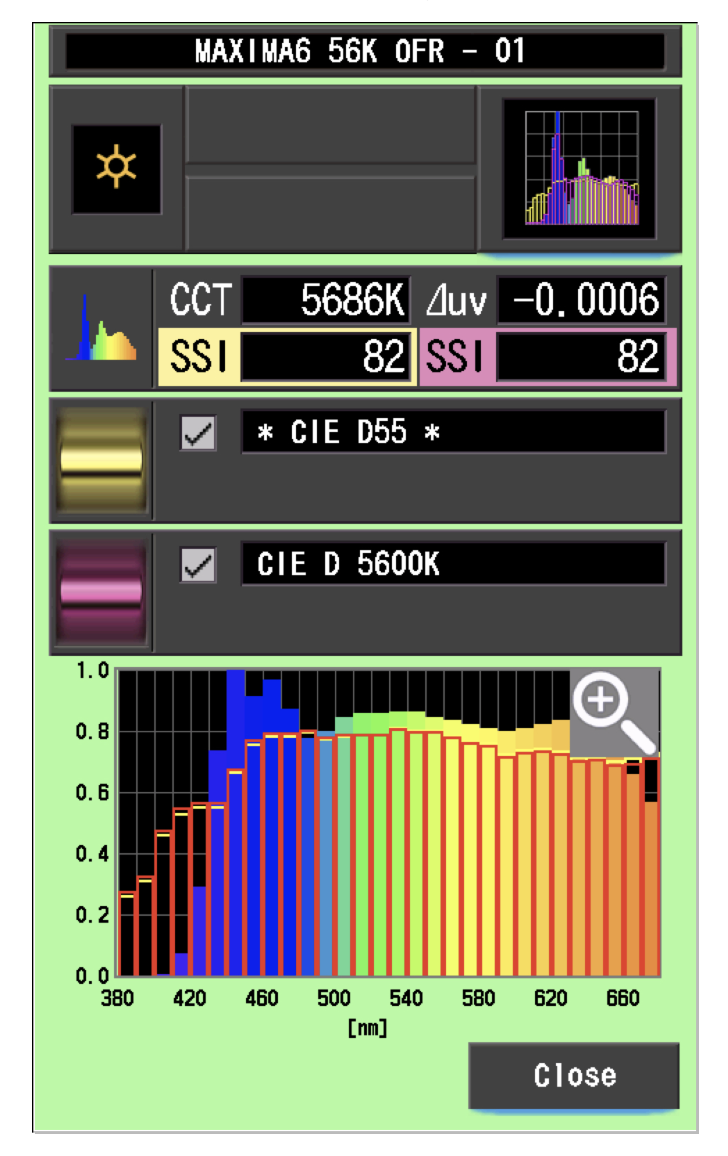
If we look above at the daylight spectrum of the Maxima 6 GaN you can see the extra blue spike at around 430nm, this is exactly what I would expect to see with the Aputure STORM 1200x. The Maxima 6 GaN utilizes Gallium Nitride which is a binary III/V direct bandgap semiconductor that is well-suited for high-power transistors capable of operating at high temperatures. Since the 1990s, it has been used commonly in light-emitting diodes (LED). Gallium nitride gives off a blue light used for disc-reading in Blu-ray.
Now, what you clearly need to remember is that the Maxima 6 GaN is a daylight-only (5600K) fixture.
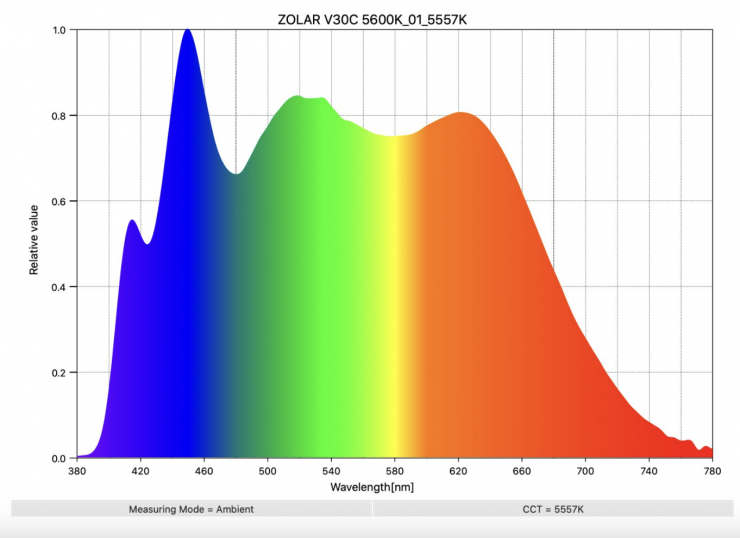
If we have a look at a full-spectrum fixture that is doing something similar, in this case, the ZOLAR Vega 30C, you can see there is extra information at around 400nm. You can also see why this translates to high SSI scores.
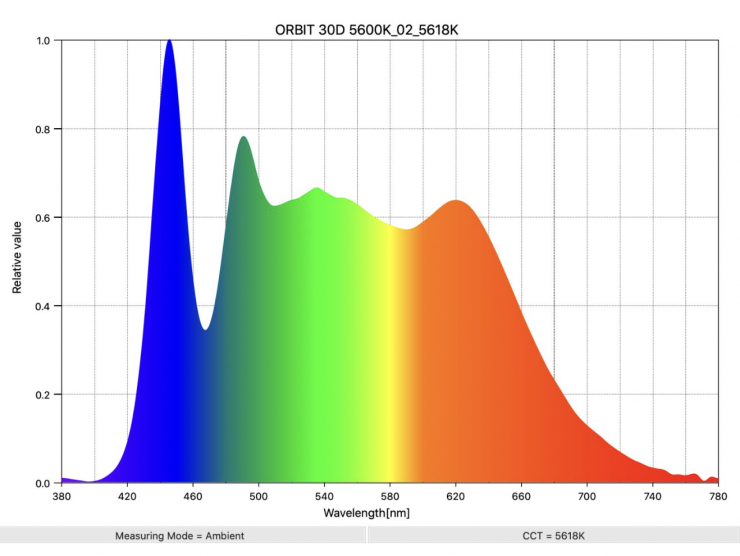
If we look at an LED light that isn’t utilizing this type of technology, such as the ARRI Orbiter, we can see the difference in the spectrum.
Output
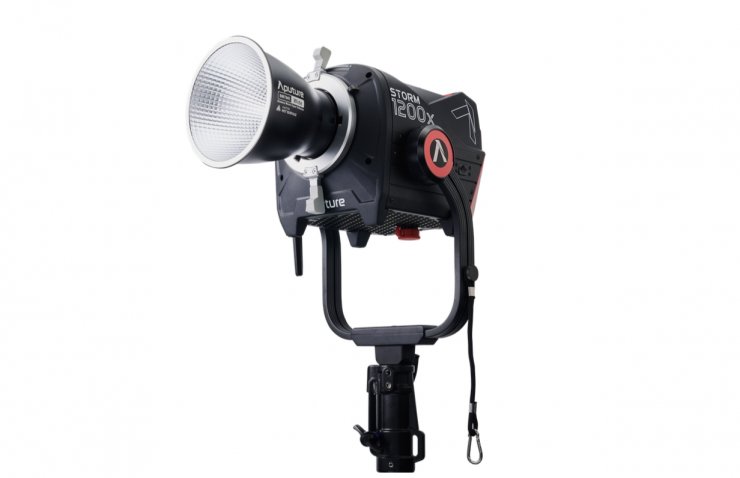
The fixture utilizes advanced diode color mixing that allows it to more effectively utilize each diode’s light output. Aputure claims that the STORM 1200x can output 2,500 Lux @3m / 9.9′ when set at 5600K and used with its 45° reflector.

Above you can see the claimed output at various CCT settings when the light is used open face and with the three different reflectors.
So how does that output compare to some other lights at a distance of 3m / 9.9′ when used with their standard 45° reflector?
| OUTPUT @3200K | OUTPUT @5600K | |
| Aputure Storm 1200x | 19,500lx | 22,500lx |
| Aputure LS 1200d Pro | 13,010lx | |
| Godox KNOWLED MG1200R | 26,200lx | 24,400lx |
| Nanlux Evoke 900C | 12,810lx | 12,940lx |
| Nanlux Evoke 1200B | 15,900lx | 18,570lx |
As you can see, the claimed output of the Aputure Storm 1200x is less than the claimed output of the Godox KNOWLED MG1200R, but it is more than both the Nanlux Evoke 900C and Nanlux Evoke 1200B. This isn’t an apples-to-apples comparison because the lights have slightly different power draws. For instance, the Godox KNOWLED MG1200R draws 1600W, while the Aputure Storm 1200x draws 1440W.
If we compare the Aputure Storm 1200x to the Aputure LS 1200d Pro it is claimed to have just over 33% more output.
The light also has Dual Output Modes, so you can set it to Max or Constant output. In Max Mode, it will output the most amount of lux possible. In Constant Mode, it should output a very similar amount of lux at all CCT settings.
How does it stay cool?
The STORM 1200x utilizes gfans in both the light head and the power supply/controller.
Aputure has included 6 Fan Modes:
- Auto/Smart
- High
- Medium
- Low
- Delayed
- Silent
It will be interesting to see how loud the fan noise is as on some previous Aputure fixtures I found the fan noise to be pretty loud.
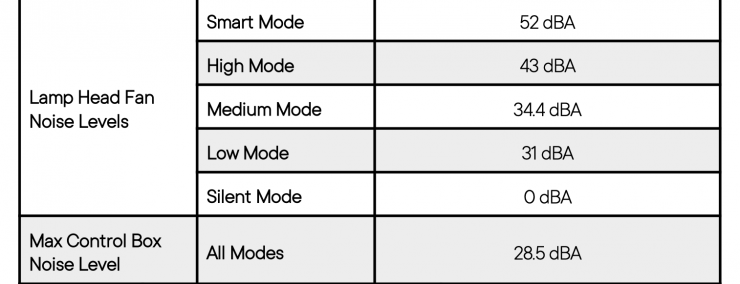
Above you can see what the claimed noise levels are for the various fan modes.
For photographers, there are three modes you can choose from:
- High-Speed Photography
- Lead-Follow
- Studio Modes
CCT Range & +/- G/M
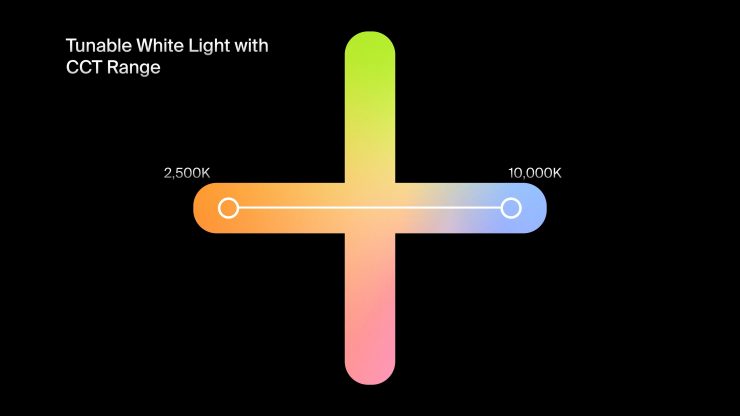
The STORM 1200x is CCT adjustable from 2500K to 10,000K. According to Aputure, the STORM 1200x is the first light of its kind to offer 100% +/- Green control, the full ASC MITC range of adjustment.
So how does that compare to the competition?
| CCT RANGE | +/- G/M | |
| Aputure Storm 1200x | 2500-10,000K | Yes |
| Godox KNOWLED MG1200R | 1800-10,000K | Yes |
| Nanlux Evoke 900C | 1800-20,000K | Yes |
| Nanlux Evoke 1200B | 2700-6500K | No |
xy Control
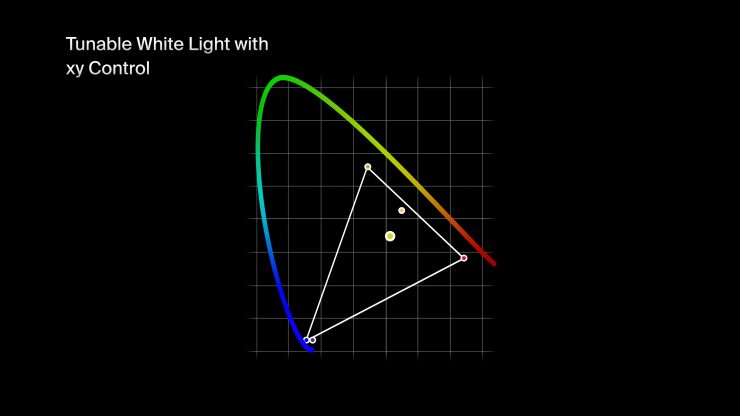
The light has xy control so you can input coordinates to get it to match other lighting sources.
Size & Weight
The STORM 1200x light head and yoke weighs 9.50kg / 20.94 lbs. The Power supply/controller weighs 5.92kg / 13.05 lbs.
So how does that weight compare to some of the competition?
| TOTAL WEIGHT | |
| Aputure STORM 1200x | 15.42kg / 33.99 lbs |
| Nanlux Evoke 900C | 12.20kg / 26.90 lbs |
| Godox KNOWLED MG1200R | 16.5kg / 36.37 lbs (excluding yoke) |
ProLock Locking Bowens mount
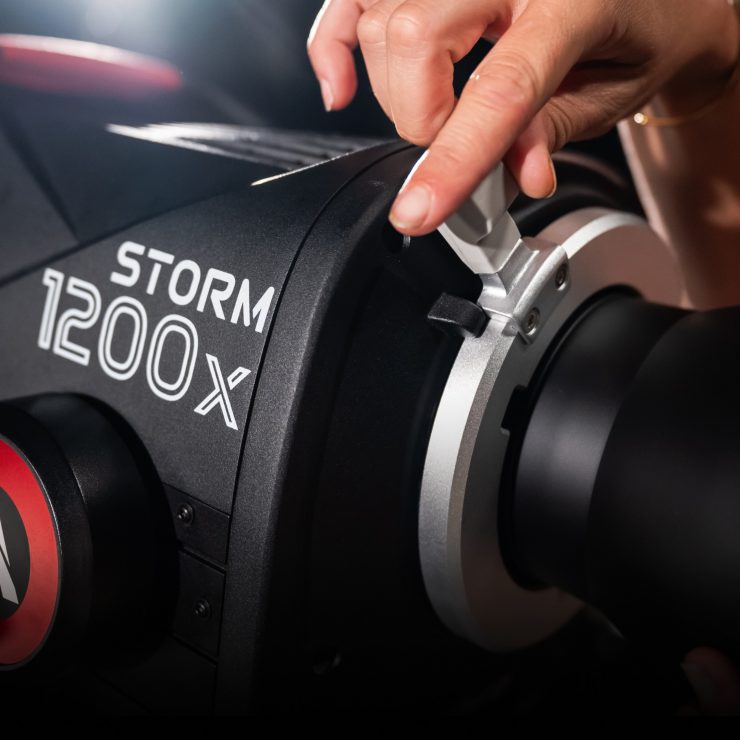
The STORM 1200x utilizes a ProLock Locking Bowens mount.
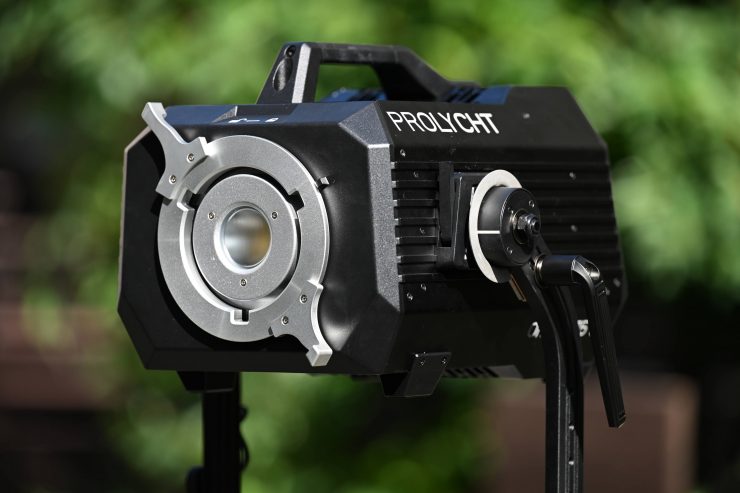
Again, this is a direct result of the Prolycht acquisition. The Prolycht Orion 675 FS featured a Prolock Locking Bowens Mount and that technology has now found its way into an Aputure product.
The Orion 675 FS featured a positive locking clamp on the Bowens mount. This was a smart idea because a lot of standard Bowens mounts on competing fixtures leave a lot to be desired. The Bowens S-mount was never designed to take large and heavy Fresnels or the types of lighting modifiers that are now available.
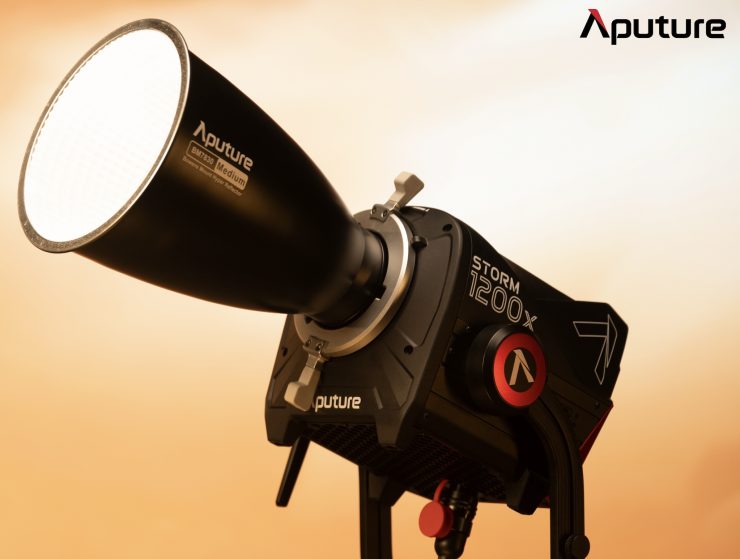
Essentially the ProLock is like a PL mount for your light. It works in exactly the same way as a PL camera mount. It is made out of metal and it is very strong. This allows you to put heavy lighting modifiers or a Fresnel on the fixture without fear of anything breaking. In the past, every time I put the F10 Fresnel on the Aputure LS 600c Pro I was worried that I was going to break the mount.
With the ProLock, once you lock in an accessory it doesn’t move or wobble around like it would if you were using a standard Bowens mount. With the Aputure LS 600c Pro, every accessory that you attach to the light wobbles around. Utilizing the ProLock will make it far easier to attach and remove lighting modifiers.
Separate Power Supply/Controller
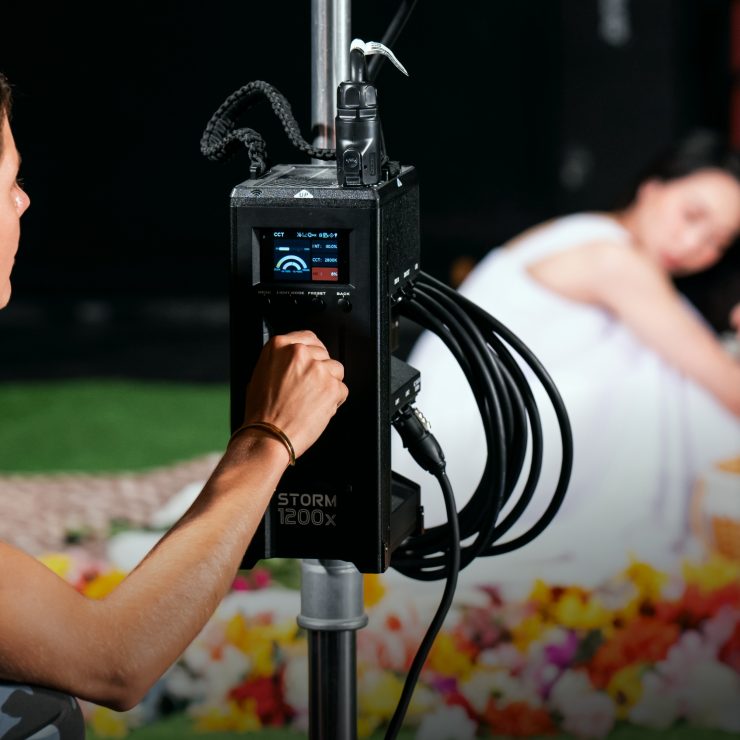
As you would expect with a fixture like this, it compromises of a lamphead and a separate power supply/controller.
From what I have been told, there is no way of running the light via a 48V external source.
New UI
Aputure has also introduced a new streamlined UI with the STORM 1200x, which is said to be easier and more straightforward to use.
Low dimming capabilities

The Aputure STORM 1200x can dim right down to 0.1% and the company claims that it can maintain accurate CCT and color reproduction even at its lowest levels. Bit-depth control is increased for improved low-end dimming.
There are four dimming curves you can choose from:
- Linear
- Exponential
- Logarithmic
- S-shaped
Lighting Effects
Users can select from 9 different lighting effects: Paparazzi, Fireworks, Flickering Bulb, Cannon, Lightning, TV, Pulse, Flash, Explosion, and Flame.
CRMX, DMX, & Bluetooth Connectivity
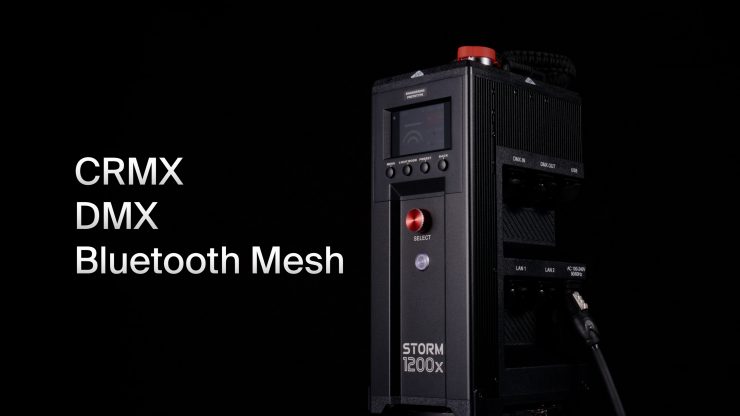
The STORM 1200x offers a full range of connectivity, with CRMX, DMX in and out, sACN and ArtNet over etherCON, and Sidus Mesh Bluetooth.
IP65 Weather Protection
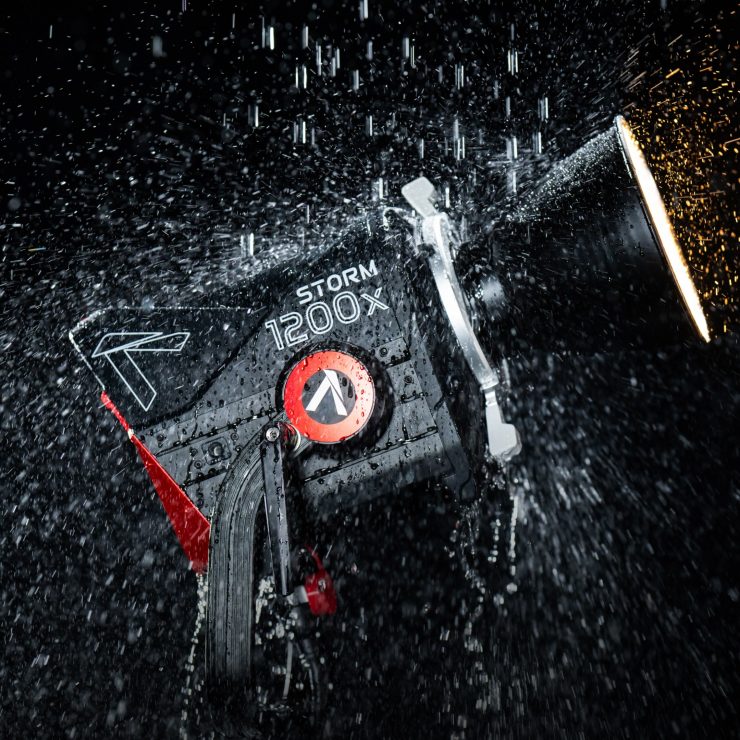
The fixture features IP65 dust and weather protection, which means the STORM 1200x can work in extreme environments. Seals on every connector and around components allow not only the lamp head but also the control box and cabling to be used outside in the rain.
What lighting modifiers will it work with?
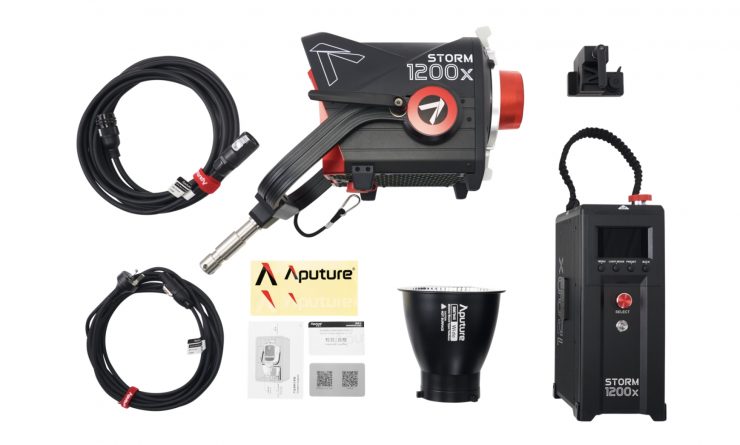
The Aputure STORM 1200x has its own range of reflectors. It will come with a 45° reflector and there will be optional 15° and 30° reflectors available. You could use older reflectors, but because of the new ProLock Locking Bowens mount they will not be optimized properly.
Apture claims that the new reflectors feature uniform edge-to-edge light output distribution with no hotspots.
The STORM 1200x will work with all the existing Aputure softboxes, lanterns, and third-party lighting modifiers.
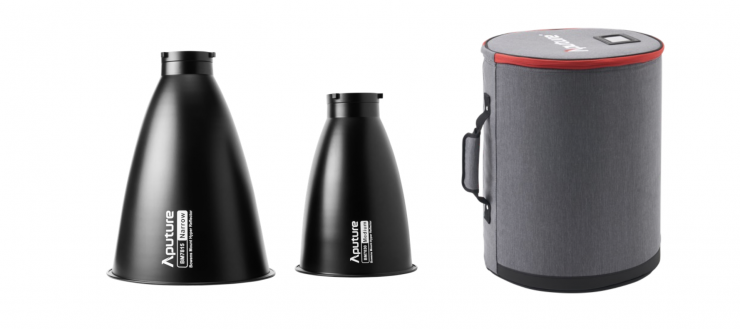
The STORM 1200x Reflector Kit is a rental-ready kit that features the 15° Narrow and 30° Medium Reflector packaged in a protective soft carrying case. This kit expands the beam angle options of the STORM 1200x, allowing users to obtain either an intense and narrow or a smooth and wider push of light.
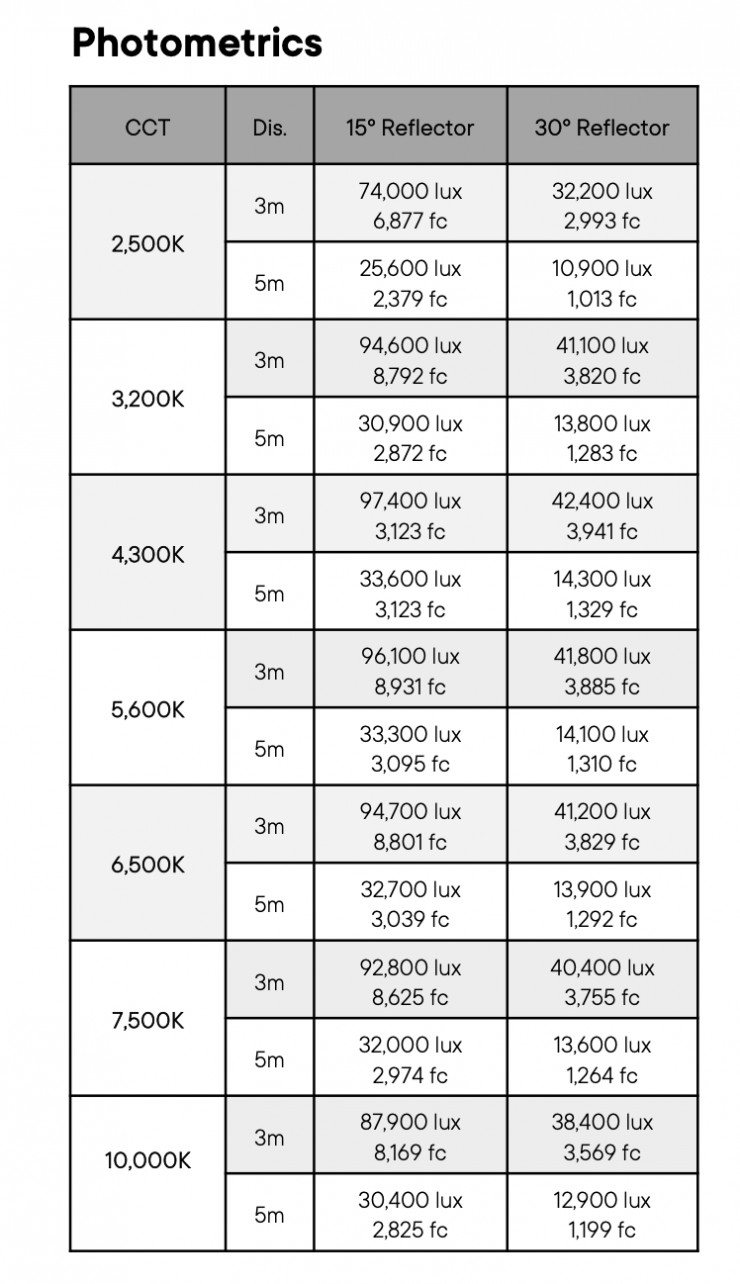
Above you can see the claimed output when using the two optional reflectors.
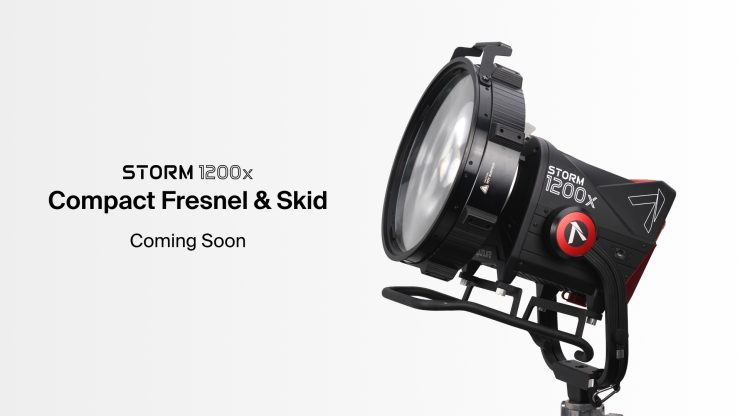
Aputure will have a new compact Fresnel available for the STORM 1200x that looks very similar to the one that was available for the Prolycht Orion 675 FS. There will also be a Skid (again similar to the one that was made by Prolycht) so that you can put the fixture on the ground without hitting the Fresnel.
How well will it match other Aputure fixtures?
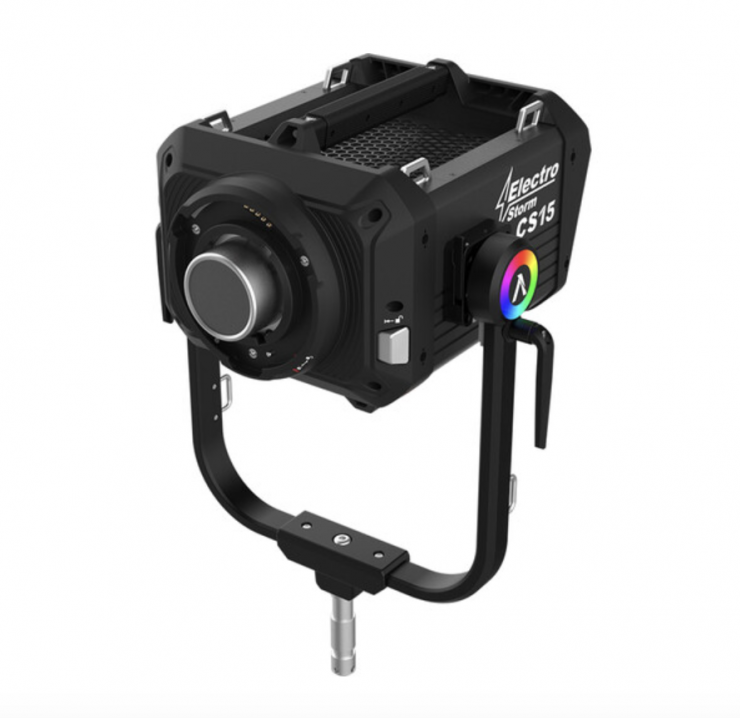
That is a good question. Other large Aputure fixtures like the Electro Storm CS15 RGB LED Monolight utilize different color engines. If you leave the light in its standard mode it will match other Aputure fixtures pretty well. If you want to utilize the color engine to better match daylight sources you will be able to put it into another mode.
As the light also has an x,y co-ordinates mode you will be able to dial it in to better match other lighting sources as well.
Price & Availability
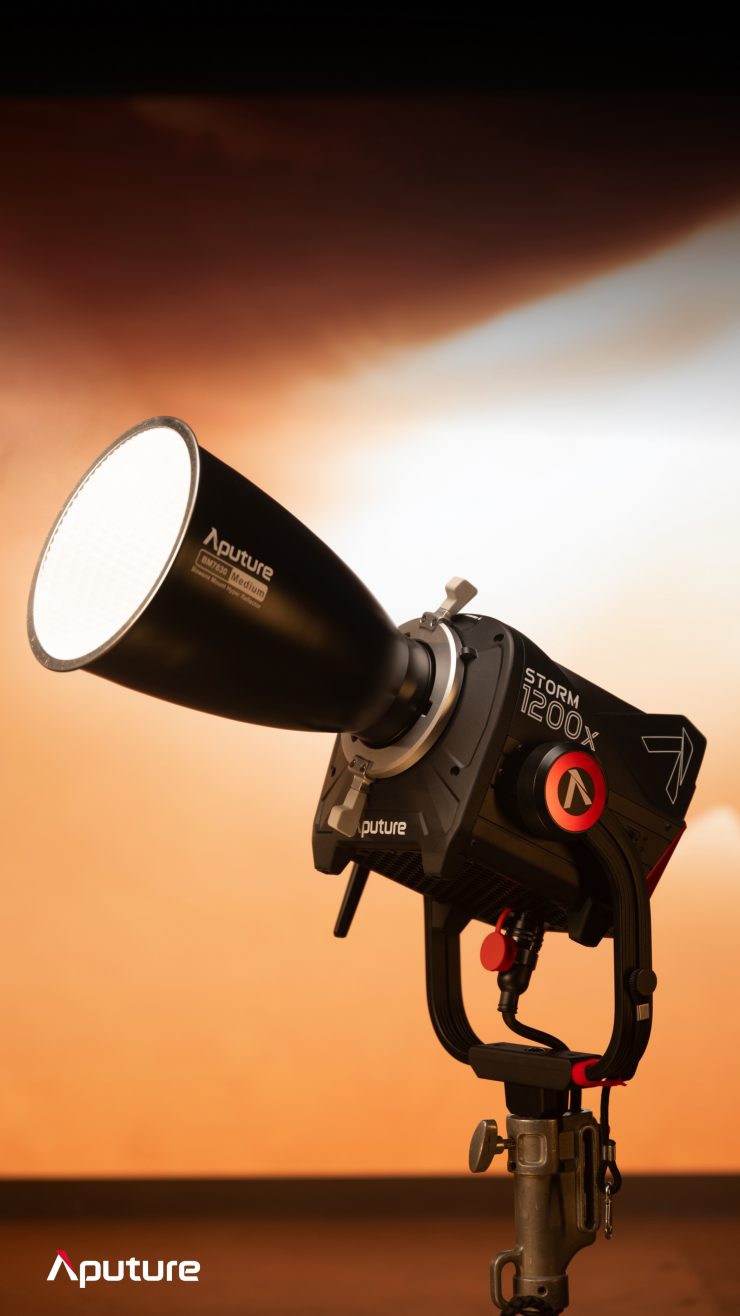
The Aputure STORM 1200x retails for $2,999 USD and the expected delivery date is mid-October. This makes it very well-priced compared to its direct competition, and it is also around $400 USD cheaper than the existing Aputure LS 1200d Pro.
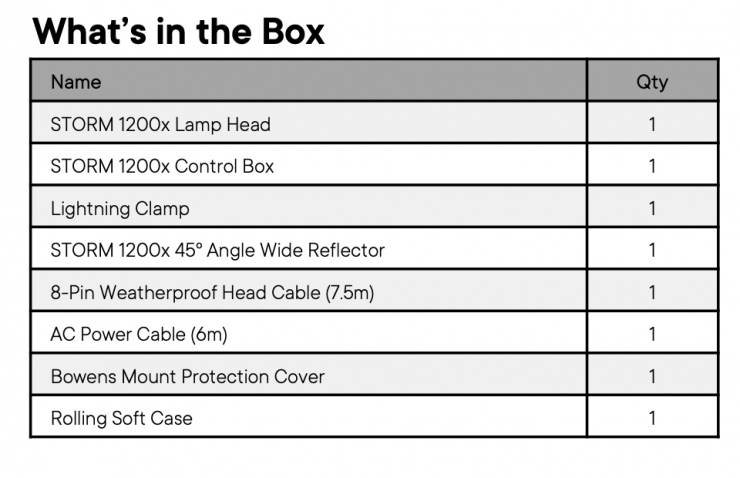
Above you can see what you get in the kit.
Competition
Competition arguably comes in the form of the Nanlux Evoke 900C RGB LED Spot Light ($4,660 USD) and the Godox KNOWLED MG1200R RGB LED Monolight ($5,290 USD). The Nanlux Evoke 1200B LED Bi-Color Spot Light ($3,895 USD) could also be considered competition.
Thoughts
The Aputure STORM 1200x looks like a very interesting light. The combination of the new BLAIR Light Engine, high output, good build quality, and the price certainly makes it a very appealing option.
I will, however, reserve my judgment until I have had a chance to do a full review of the light.

